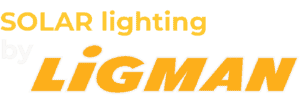Artificial lighting to sporting facilities needs to be carefully planned in order to meet the high levels of illumination and uniformity required by each sport, as well as avoid glare and provide an energy efficient solution. Each sport has its own specific lighting requirements which are determined by the pace of play, size and speed of the ball, spectator location, and nature of the sport.
Up until recently, particularly for outdoor sporting facilities, it was only metal halide flood lights that could handle this task. The high output lamps could deliver the best luminous efficacy, whilst also provide appropriate levels of colour temperature and colour rendering for this specialist area of lighting.
Advancements in LED technology mean that it is now possible to substitute metal halide fittings for LED’s with an equivalent lumen package that consume only half of the power of their traditional counterparts. This is in addition to all of the other benefits of LED’s over HIT lamps such as reduced maintenance intervals, instantaneous operation, and colour stability.
With the above in mind, the following examples illustrate the advantages of contemporary LED area lighting over conventional Metal Halide when applied to Outdoor Tennis Court Lighting.
Tennis is a fast paced sport which demands high levels of visual acuity. Good contrast between the ball and the vertical surrounds are important, however the drop off in illumination levels beyond the boundary lines should not to be too stark as players are also active in those areas.
In addition to the court itself being uniformly lit, the ball should also have a consistent level of illumination for players to better judge its velocity and trajectory during play.
Luminaires should be mounted at a sufficient height in order to mitigate glare.
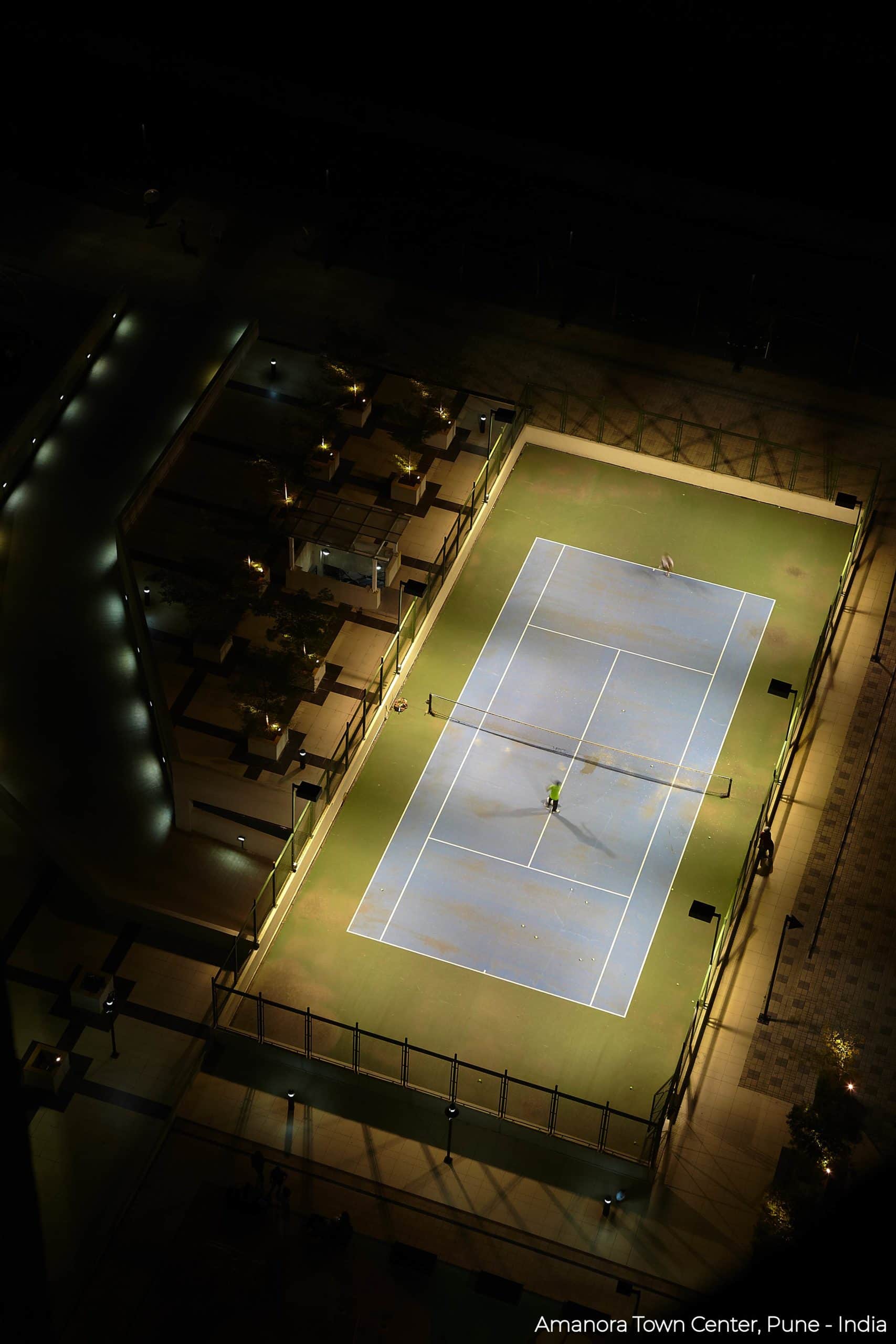
RECOMMENDED LIGHTING LEVELS
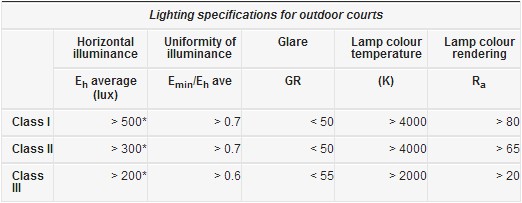
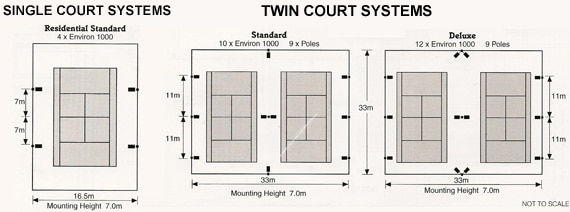
Based on the requirements set out in BS EN 12193:2007 and shown in the table referenced, there are three levels of classification for outdoor tennis courts:
Class I: Top-level national and international competitions (non-televised) with requirements for spectators with potentially long viewing distances.
Class II: Mid-level competition, such as regional or local club tournaments. This generally involves medium-sized numbers of spectators with average viewing distances. High-level training may also be included in this class.
Class III: Low-level competition, such as local or small club tournaments. This does not usually involve spectators. General training, school sports
and recreational activities also fall into this class.
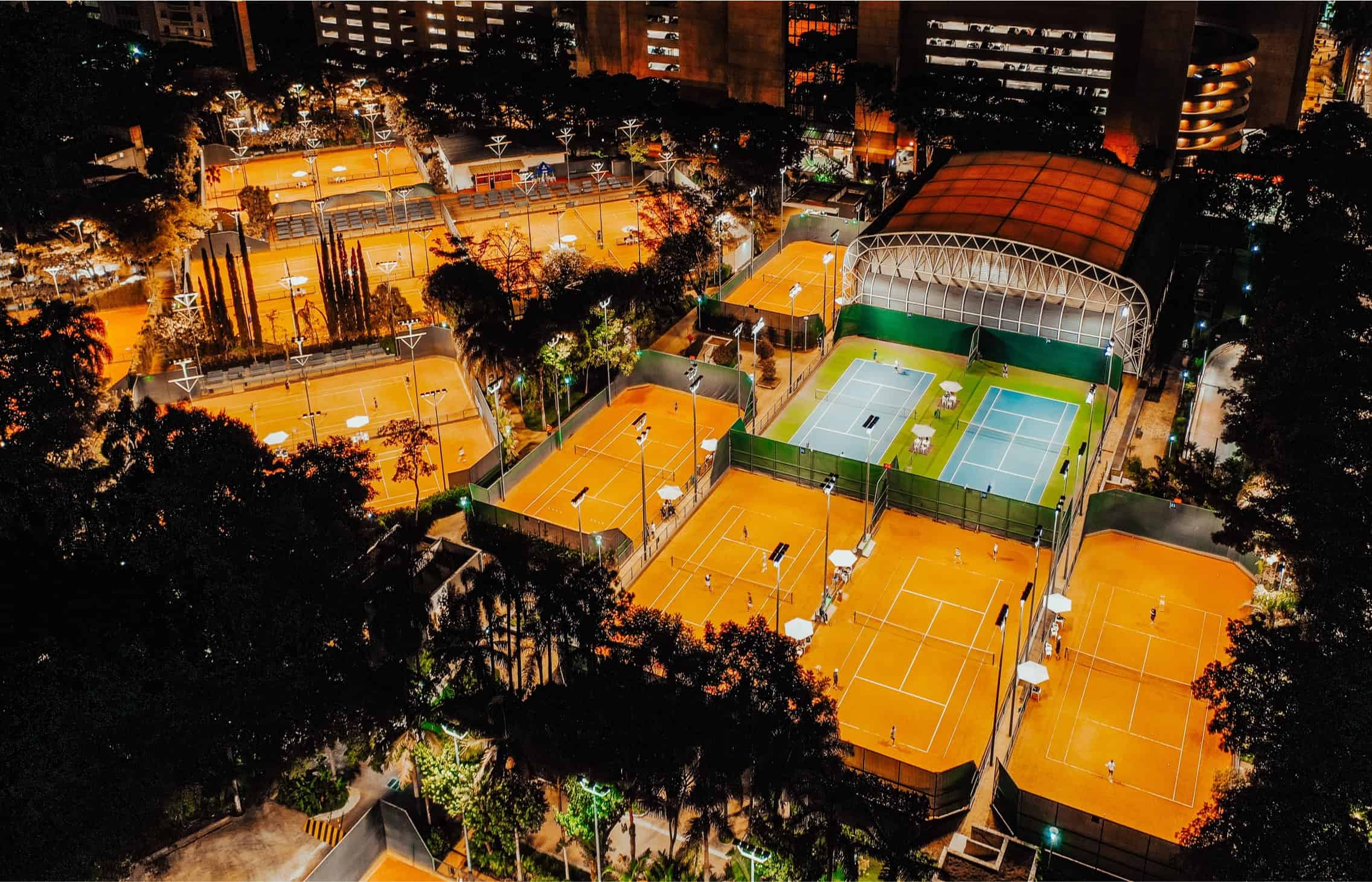
LIGHTING CALCULATIONS
The following DIALux illuminance calculations analyse a standard metal halide flood light solution against two contemporary LED flood light options, and how they compare side by side when lighting single and twin outdoor tennis courts.
Whilst traditional (metal halide) lighting installations would require costly additional hardware in order to accommodate staged lighting between the different classes, LED flood lights are better equipped for this scenario allowing for more flexibility (professional, amateur, recreational level of play) and energy savings.
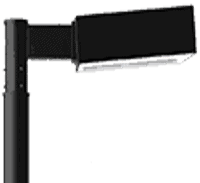
Single Court – Class III
LIGMAN MUSTANG 34 – MS-93051
Six of Single 1050W HIT = 6,300W
Eavg = 355 lx Emin/Eavg = 0.40
Emin = 143 lx
Emax = 471 lx
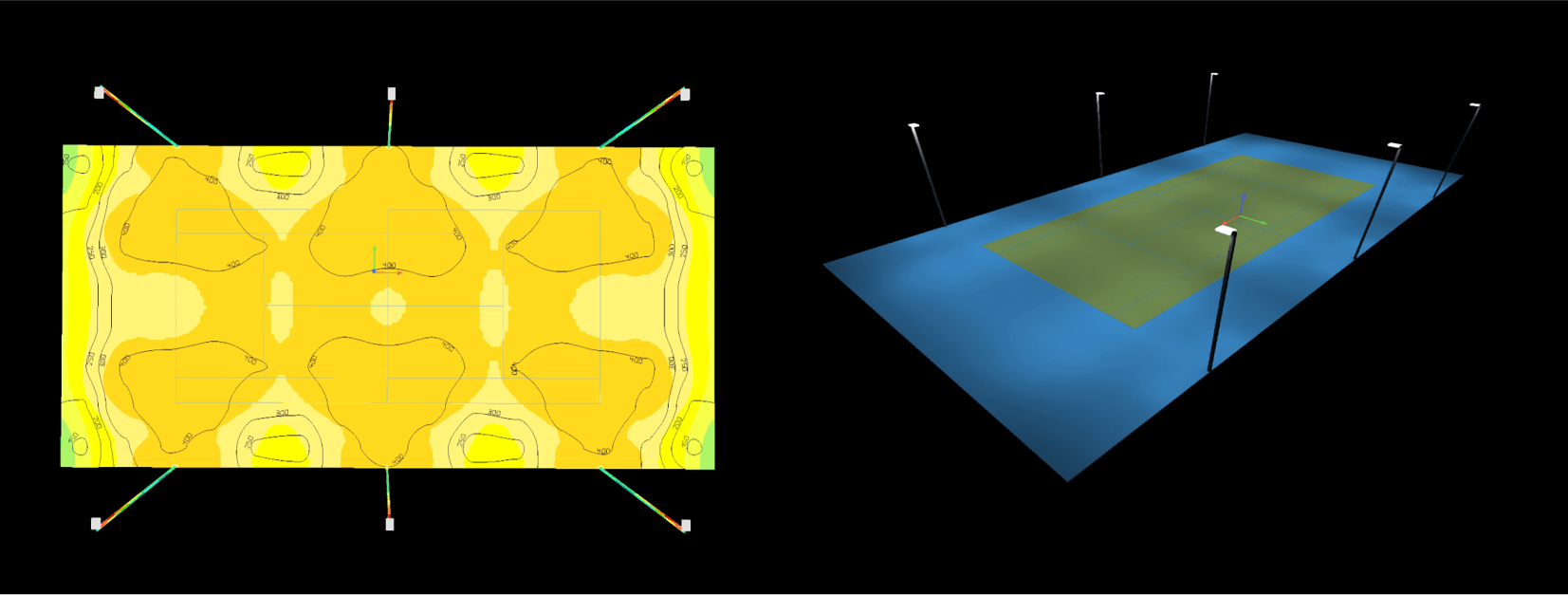
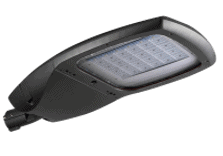
Single Court – Class III
LIGMAN BILLUND 3 – BIU-90025
Six of Dual 275W LED = 3,300W
Eavg = 318 lx Emin/Eavg = 0.62
Emin = 197 lx
Emax = 396 lx

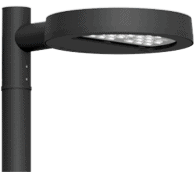
Single Court – Class III
LIGMAN STEAMER 12 – SE-90032
Six of Dual 210W LED = 2,520W
Eavg = 266 lx Emin/Eavg = 0.62
Emin = 164 lx
Emax = 363 lx
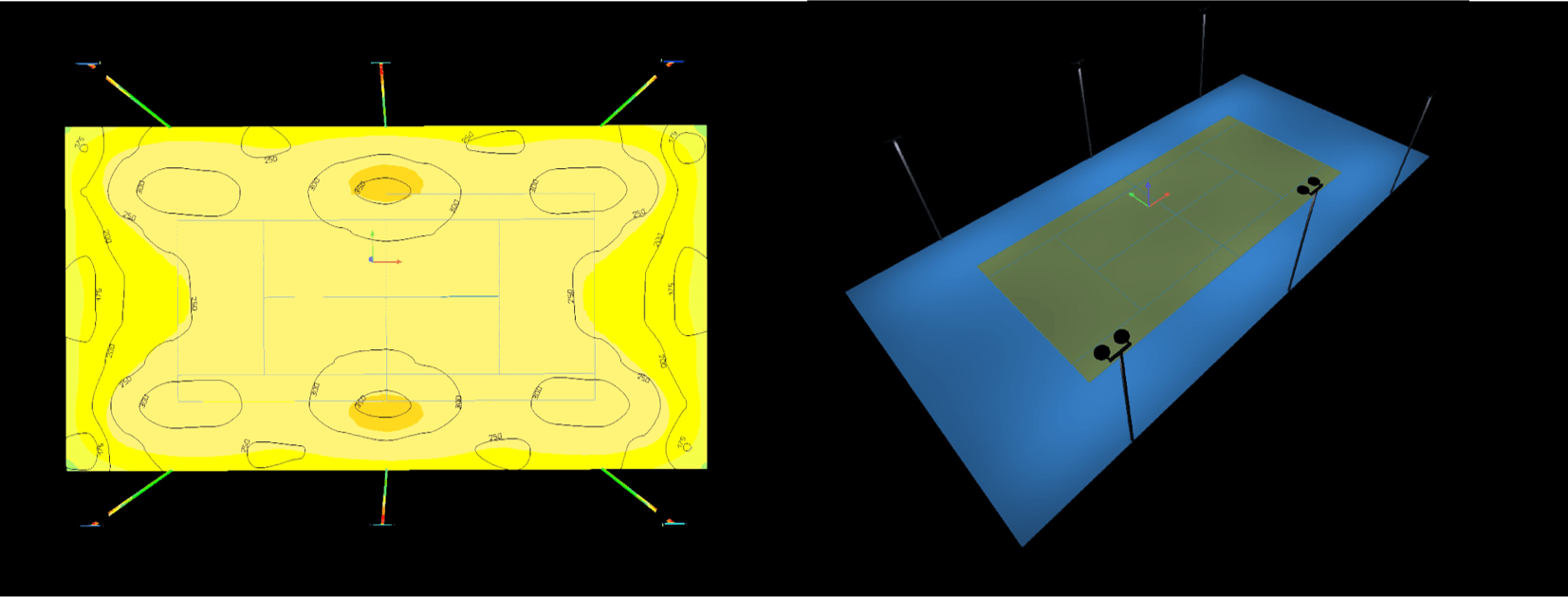

Twin Court – Class II
LIGMAN MUSTANG 34 – MS-93051
Six of Single 1050W HIT = 6,300W
Three of Dual 1050W HIT = 6,300W
Eavg = 318 lx Emin/Eavg = 0.38
Emin = 120 lx
Emax = 738 lx
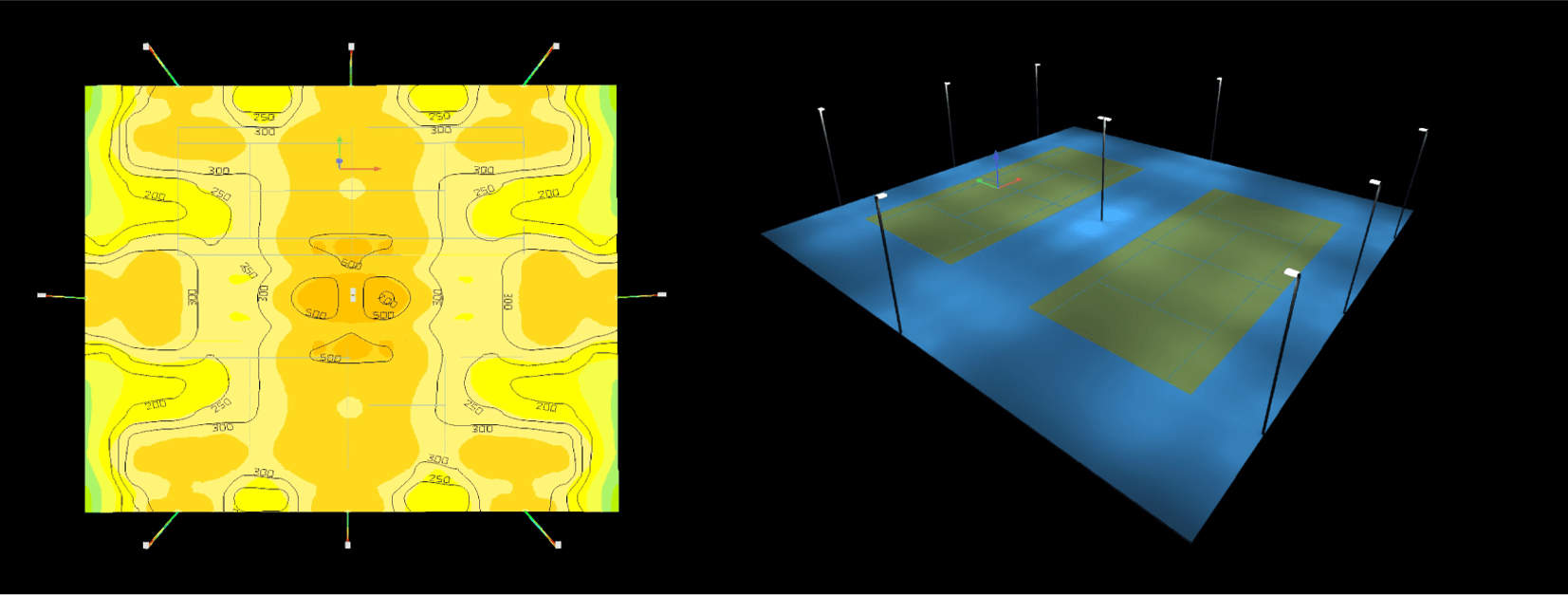

Twin Court – Class II
LIGMAN BILLUND 3 – BIU-90025
Ten of Dual 275W LED = 5,500W
Nine poles total, centre pole with four heads
Eavg = 300 lx Emin/Eavg = 0.71
Emin = 214 lx
Emax = 494 lx
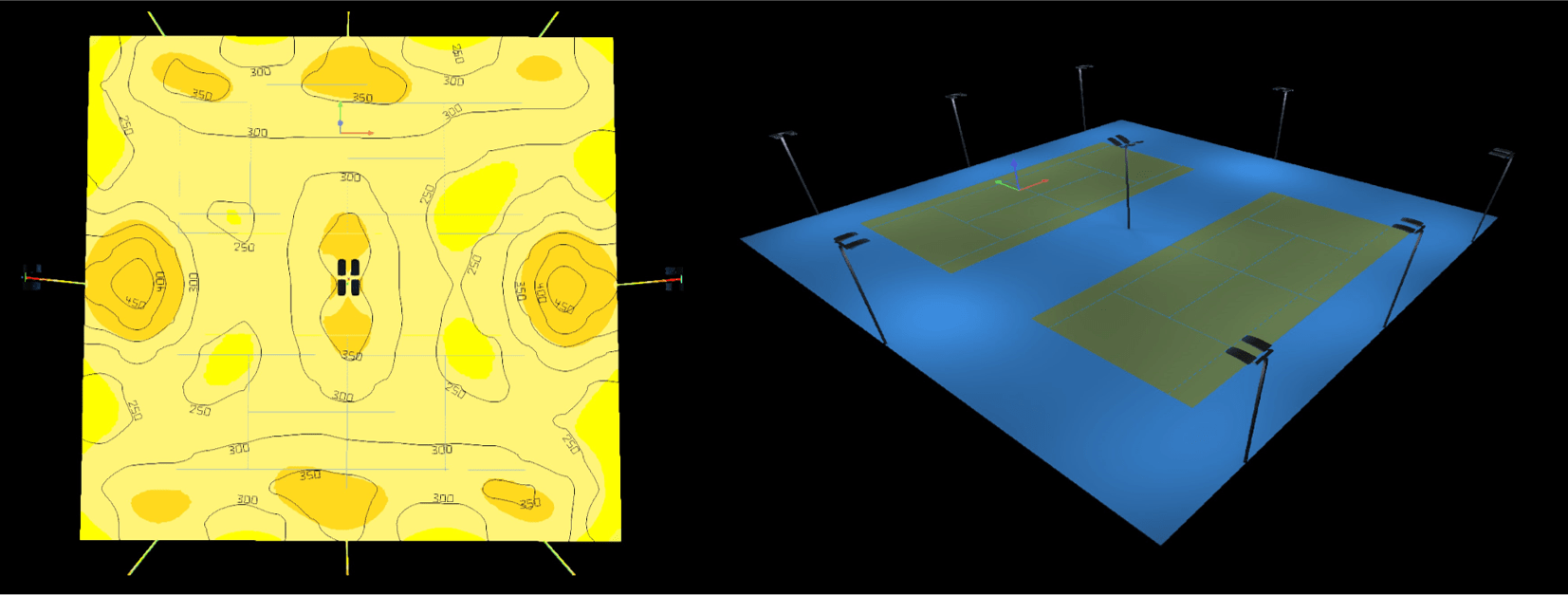

Twin Court – Class II
LIGMAN STEAMER 12 – SE-90032
Nine of Dual 210W LED = 3,780W
Eavg = 211 lx Emin/Eavg = 0.72
Emin = 152 lx
Emax = 316 lx
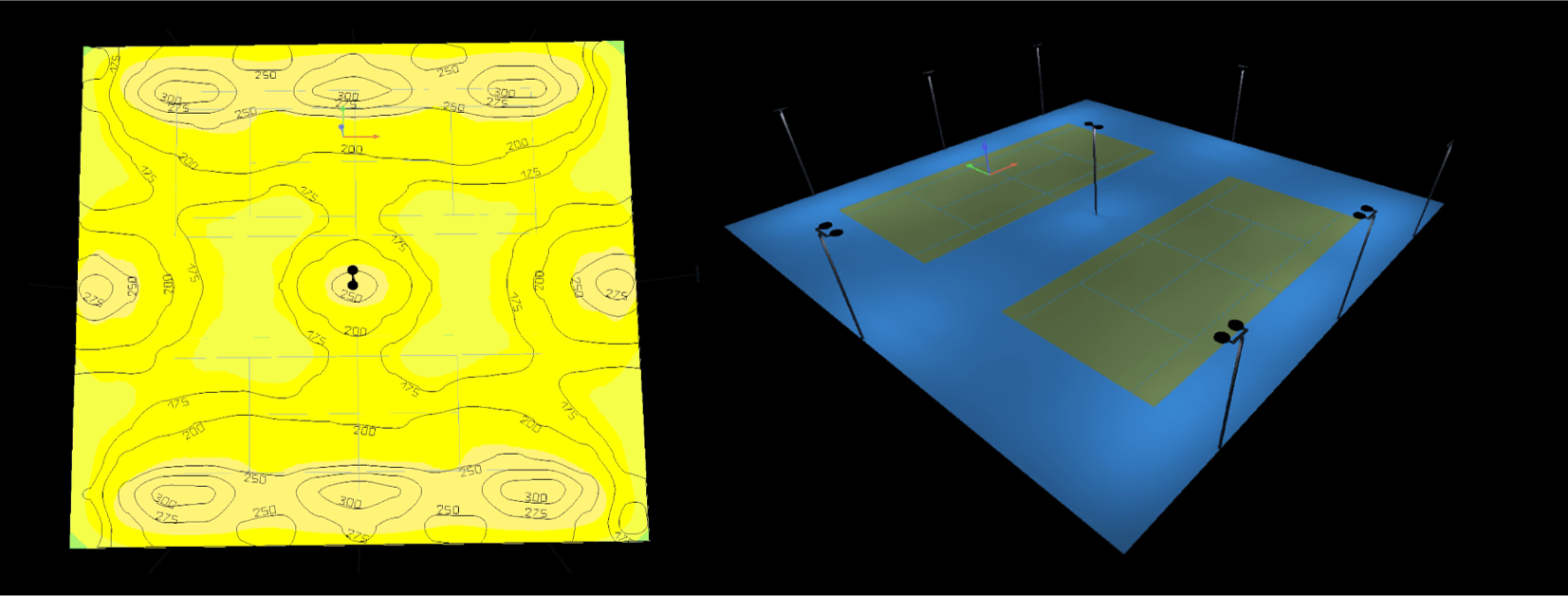

Twin Court – Class III
LIGMAN MUSTANG 34 – MS-93051
Six of Single 1050W HIT = 6,300W
Three of Dual 1050W HIT = 6,300W
Eavg = 375 lx Emin/Eavg = 0.32
Emin = 127 lx
Emax = 792 lx
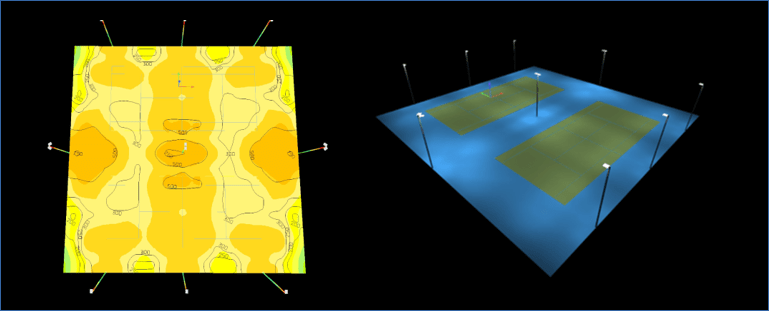

Twin Court – Class III
LIGMAN BILLUND 3 – BIU-90025
Ten of Dual 275W LED = 5,500W
Nine poles total, centre pole with four heads
Eavg = 297 lx Emin/Eavg = 0.69
Emin = 204 lx
Emax = 449 lx
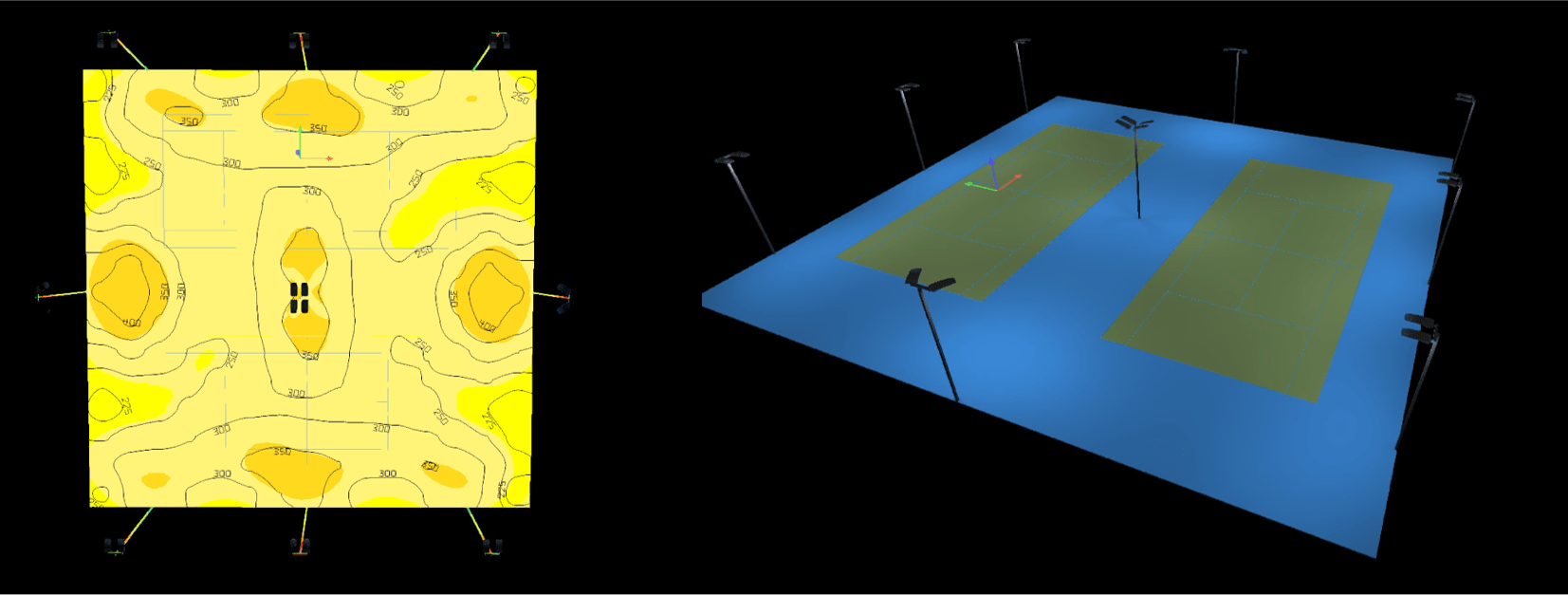

Twin Court – Class III
LIGMAN STEAMER 12 – SE-90032
Nine of Dual 210W LED = 3,780W
Eavg = 209 lx Emin/Eavg = 0.72
Emin = 151 lx
Emax = 316 lx
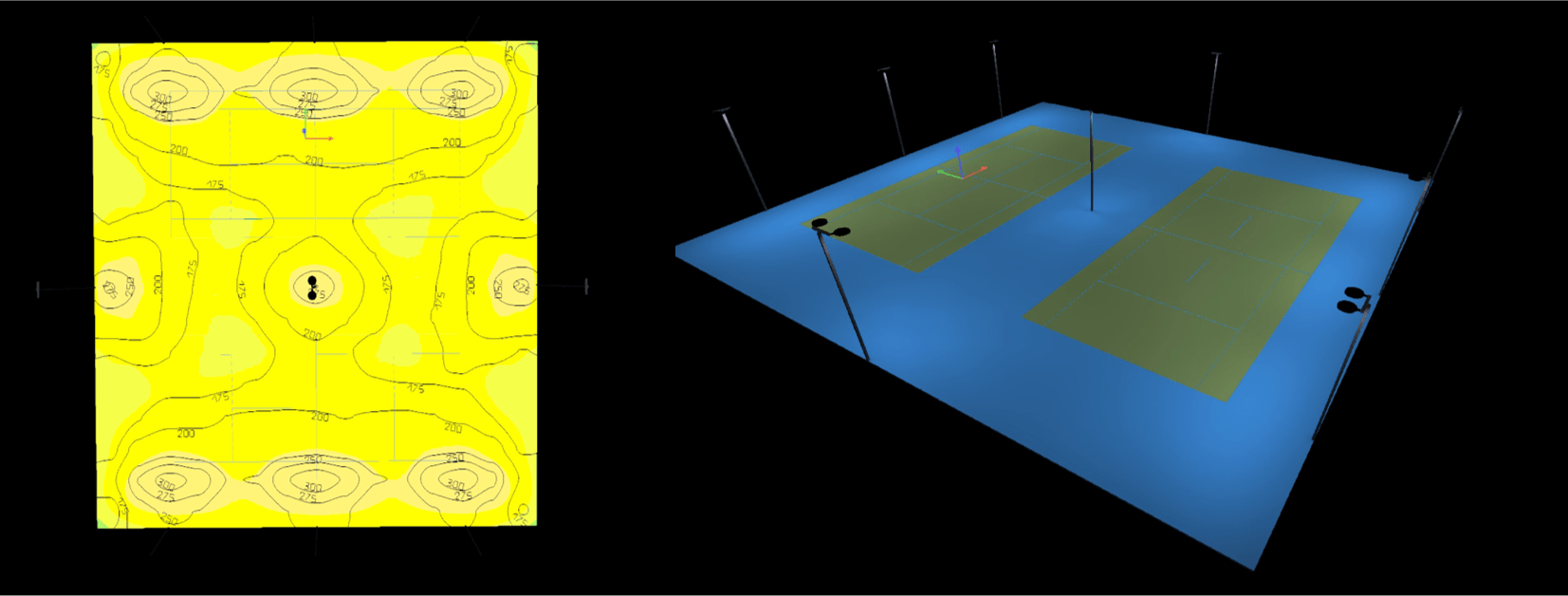
Comparing the various solutions and their respective power consumption, the energy savings that can be made by switching from Metal Halide to LED flood lights quickly become apparent.
| LIGMAN MUSTANG 34 | MS-93051 | 6 of 1050W HIT | 6,300W | |
| LIGMAN BILLUND 3 | BIU-90025 | 12 of 275W LED | 3,300W | Consumes 48% less power than HIT equivalent |
| LIGMAN STEAMER 12 | SE-90032 | 12 of 210W LED | 2,520W | Consumes 60% less power than HIT equivalent |
| LIGMAN MUSTANG 34 | MS-93051 | 12 of 1050W HIT | 12,600W | |
| LIGMAN BILLUND 3 | BIU-90025 | 20 of 275W LED | 5,500W | Consumes 56% less power than HIT equivalent |
| LIGMAN STEAMER 12 | SE-90032 | 18 of 210W LED | 3,780W | Consumes 70% less power than HIT equivalent |
When taking into account the additional benefits that LED lamps provide – such as longer life, colour stability, sophisticated control options, instantaneous operation, and optimised beam distribution – and thanks to the availability of high output modules, this advanced lighting technology can now be embraced by the specialist field of sports lighting.

